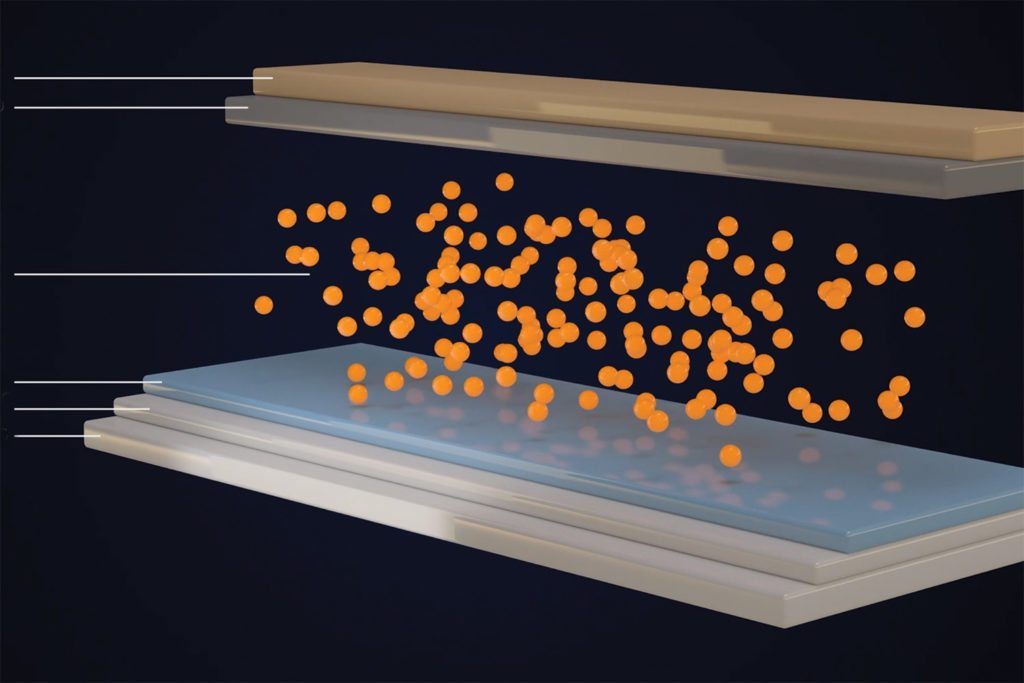Australia’s engineering contributions to the world of solar energy have been significant. A University of Queensland team is pushing the technology even further.
According to a recent report by the Council of Australian Government’s Energy Security Board, rooftop solar now accounts for five per cent of Australia’s total National Energy Market generation.
This is predicted to reach 10 per cent by 2030.
Though the country has little in the way of a photovoltaic cell manufacturing base, Australian-developed passivated emitter and rear cell (PERC) silicon solar cell technology is the leading contributor to new capacity globally.
Now, a University of Queensland (UQ) team is leading the world in a newer type of solar cell that is based on quantum dots.
The team recently raised the world record efficiency for quantum dot-based sunlight-to-energy conversion from 13.4 per cent to 16.6 per cent.
Quantum dots (QD) are particles sized between two and 10 nm, with different properties depending on characteristics that include the material they’re made from, their size and their shape. They have been used in biomarker dyes, sensors and QLED televisions.
QDs have also quickly risen in profile as a basis for new solar cells, with rapid gains in efficiency being made since the bar was first set at 2.9 per cent in 2010 by the US Department of Energy’s National Renewable Energy Laboratory.


The next generation
The world-beating UQ team, led by Nanomaterials Centre Director Professor Lianzhou Wang, has been working with a “new generation” of quantum dots based on a halide perovskite material.
This began with a postdoc research fellow and a PhD student, Wang said.
“They had been working very hard on this technology for about three years. We developed it in our labs. It’s a very technical process to prepare the dots, and we use these dots as the active material for our solar cell device,” Wang told create.
“The technology can be much cheaper than the silicon-based solar cell and can be used like a flexible or indoor light-harvesting application that may not be able to be achieved by the silicon-based solar cell.”
The dots need to be stabilised due to their size, Wang said.

He added that a novel surface engineering process achieves this by “using some surface functional group to not only protect the particles so that they are much more stable than before, but also to allow the electrons to pass through more efficiently to generate high efficiency”.
The colloidal material is deposited by spin coating to create a uniform film of 300 to 400 nm on a substrate, then covered in an electrode material. The record was set on a 0.1 cm cell.
The method was subsequently used to create a 6 cm2 cell, similar in size to a solar cell module.
Spin coating works in the lab, but it does not scale well. The team is working on more manufacturing-friendly methods, including doctor blade eposition.
“The next step is to further scale up to using the roll-to-roll printing process to make the solar cell on a large scale and also to test the stability and the efficiency of its implementation,” Wang said.
Complementary advances
The smaller, 6 cm2 modules are not far from commercial reality, according to the professor. The process, which Wang believes will take a year or two, is being helped by the university’s Uniquest commercialisation arm.
The team said the next step is 20 per cent efficiency, about the same as current rooftop solar cells. With brisk improvements, as well as cheapness and other exciting possibilities, does Wang see QDPV ending the silicon solar cell success story?
He answered no. He believes the two generation methods will be complementary.
“Silicon-based solar cells have been broadly deployed on rooftops for years. It’s also on a very good trajectory to further scale up and reduce the cost,” Wang said.
“We are targeting some areas where it’s very hard for silicon solar cells to achieve — for example, flexible applications and also, for example, in weak light and indoor light or on cloudy days where our solar cells will work much better than a silicon-based cell.”
Electric skin
The three to five-year horizon for Wang and his team’s quantum dot cells contains other tech developments, where the transparent and flexible properties made possible by the coating could include tinted energy-harvesting windows.
Their vision is of an electricity-generating “skin” that could coat and power buildings, devices, vehicles and more.
Chemical engineer Dr Yang Bai, a UQ Development Fellow and researcher on Wang’s team, told pv magazine that the record-breaking cell was made on a glass substrate, but the material could lend itself to flexible devices.
“We are currently working on [a] flexible substrate and it seems easier to maintain the high quality of QD films on [a] flexible substrate compared to other thin-film PV technologies,” Bai said.
